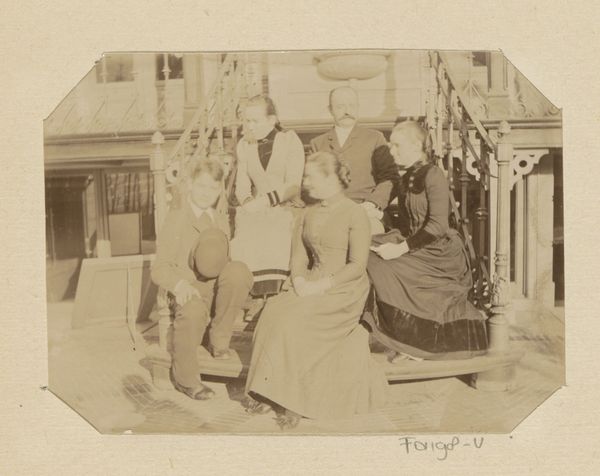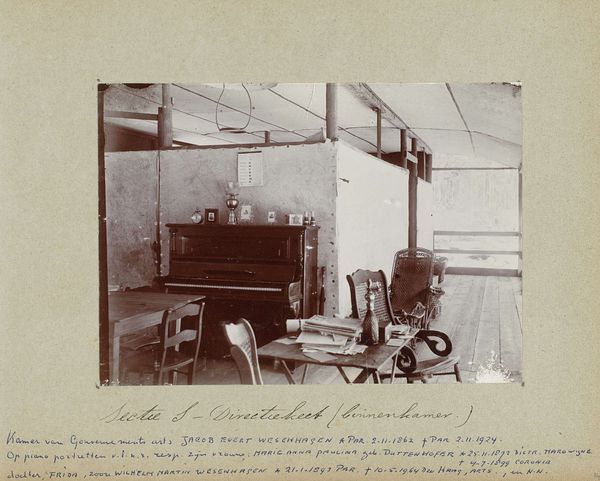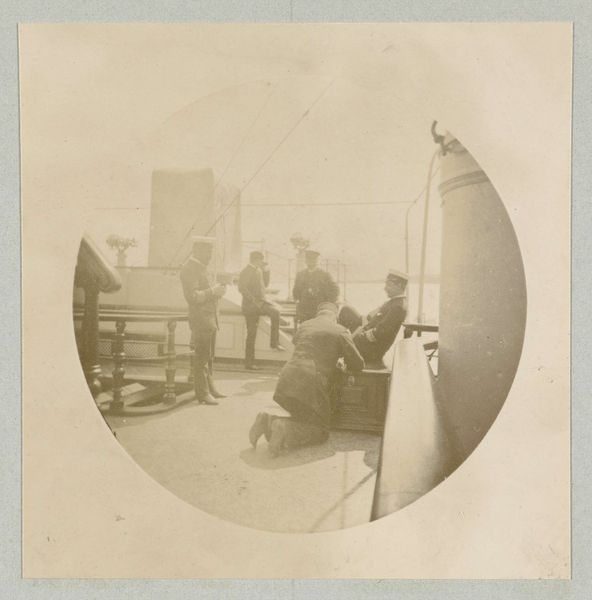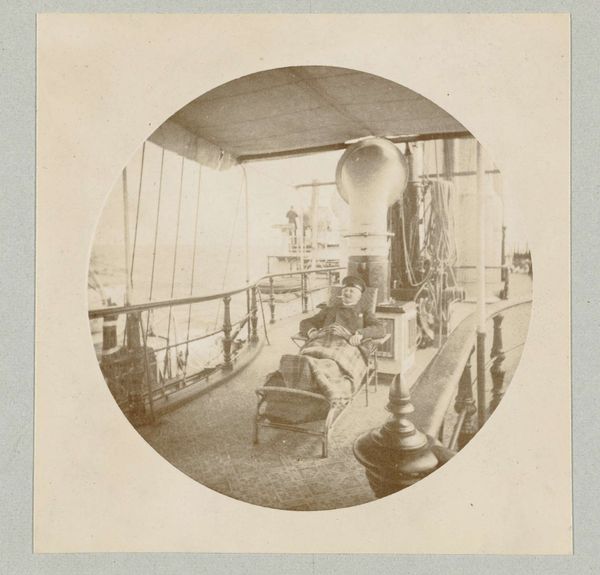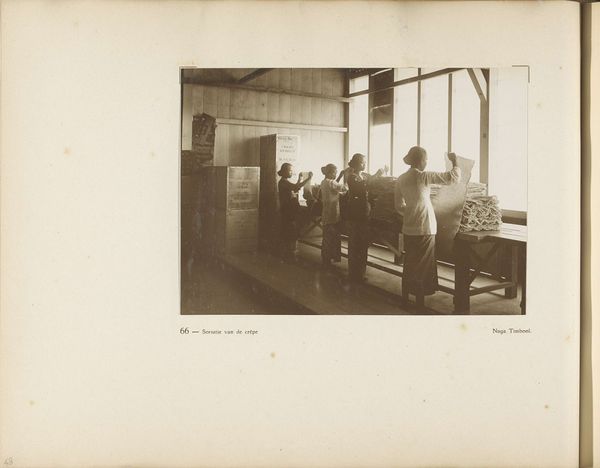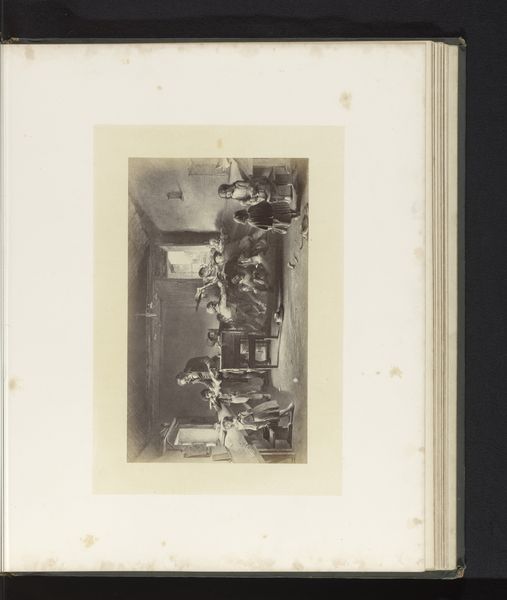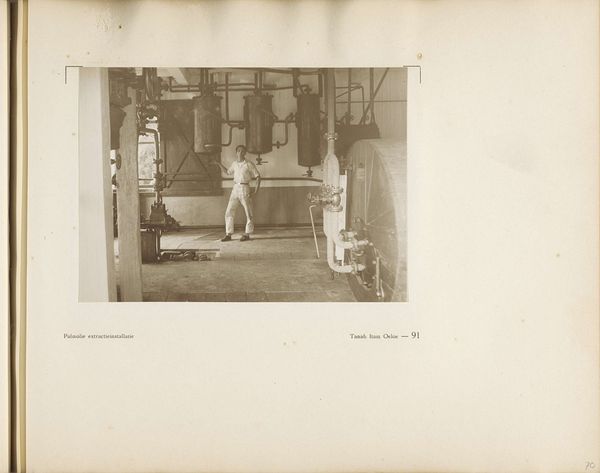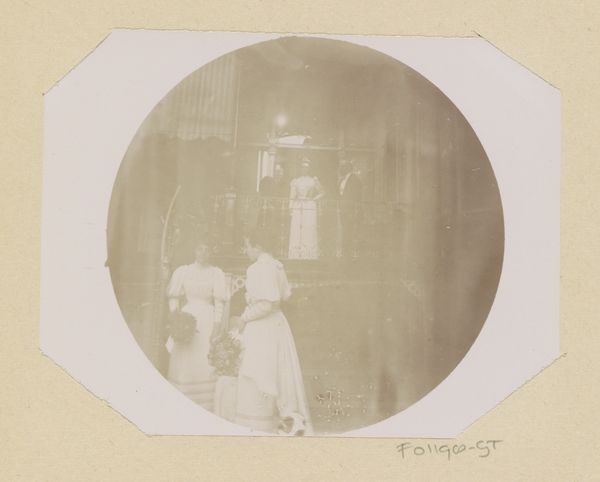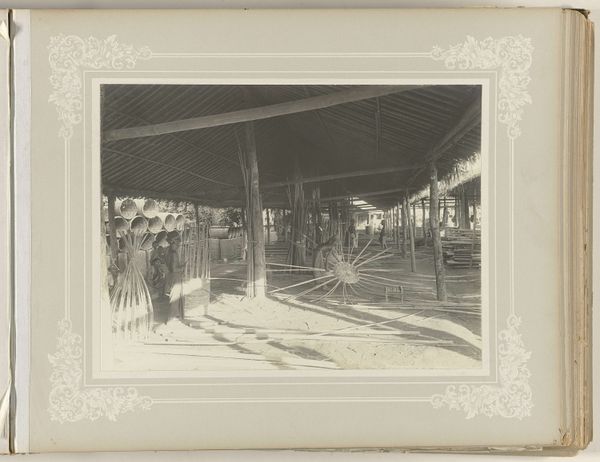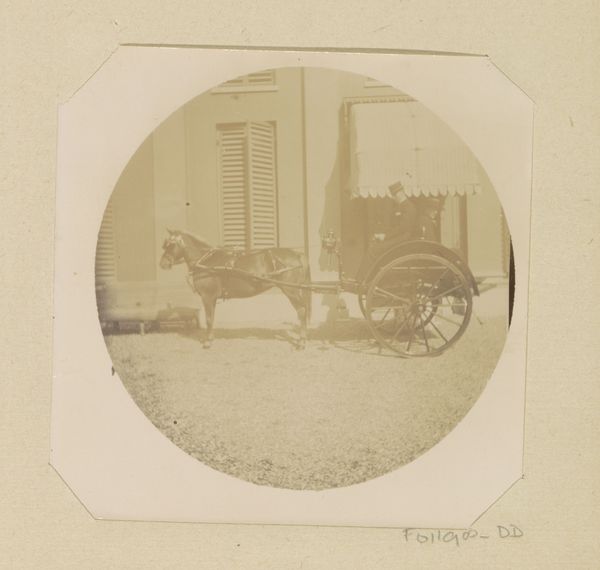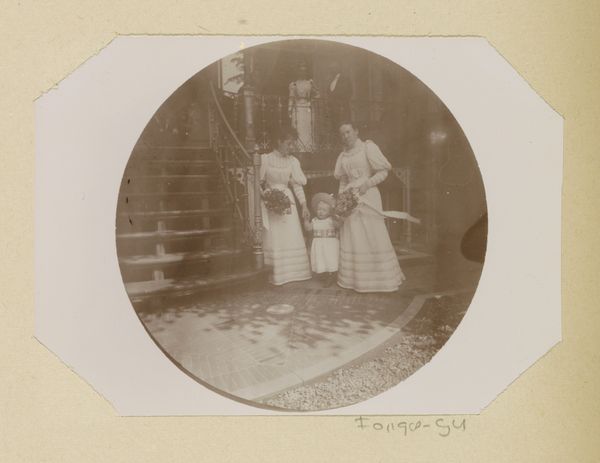
Drie vrouwen op een buitentrap, in het midden Lucia Wilhelmina Piek-Jolles 1889 - 1893
0:00
0:00
photography
#
portrait
#
still-life-photography
#
pictorialism
#
photography
#
genre-painting
Dimensions: height 90 mm, width 119 mm
Copyright: Rijks Museum: Open Domain
Curator: What strikes me immediately about this photo is its ghostly, faded quality. It almost feels like a memory surfacing from a long-forgotten dream. Editor: Indeed. This gelatin silver print, dating from around 1889 to 1893, titled "Drie vrouwen op een buitentrap, in het midden Lucia Wilhelmina Piek-Jolles", is believed to be the work of Johanna Margaretha Piek. It presents a composition with three women staged on what appears to be an outdoor veranda or porch. Curator: You know, those kinds of portraits during the late 19th Century were always such meticulously planned affairs. Do you ever wonder about the actual, you know, *lives* of the women behind the stiff poses? Editor: Precisely! In an era deeply structured by societal norms, photographs served to reinforce familial and social standing. Pictorialism, a movement which embraced artistic effect achieved via manipulation of the photographic process, valued artistic sensibility, even when depicting genre scenes and portraits, such as here. One can almost imagine them, carefully positioned, to project a narrative of middle-class Dutch life, while constrained by the limitations of lengthy exposures of the time. Curator: Exactly, look at Lucia in the center, she’s commanding all attention with such delicate composure. It does convey a sense of staged domesticity—like theatre. I'd love to just step through that cloudy lens and hear their unguarded conversations. I guess every photo, particularly from this time, opens a doorway for all of us to dream... and imagine. Editor: Your point highlights photography’s capacity to reveal not just what’s visible, but to invite speculation. While such constructed photographic displays offered avenues for crafting a desirable self-representation in public life, these also documented and codified cultural identity—even if this was contrived and curated for wider viewership. This intersection of history and imagination is what ultimately lends such images their poignant impact.
Comments
No comments
Be the first to comment and join the conversation on the ultimate creative platform.
